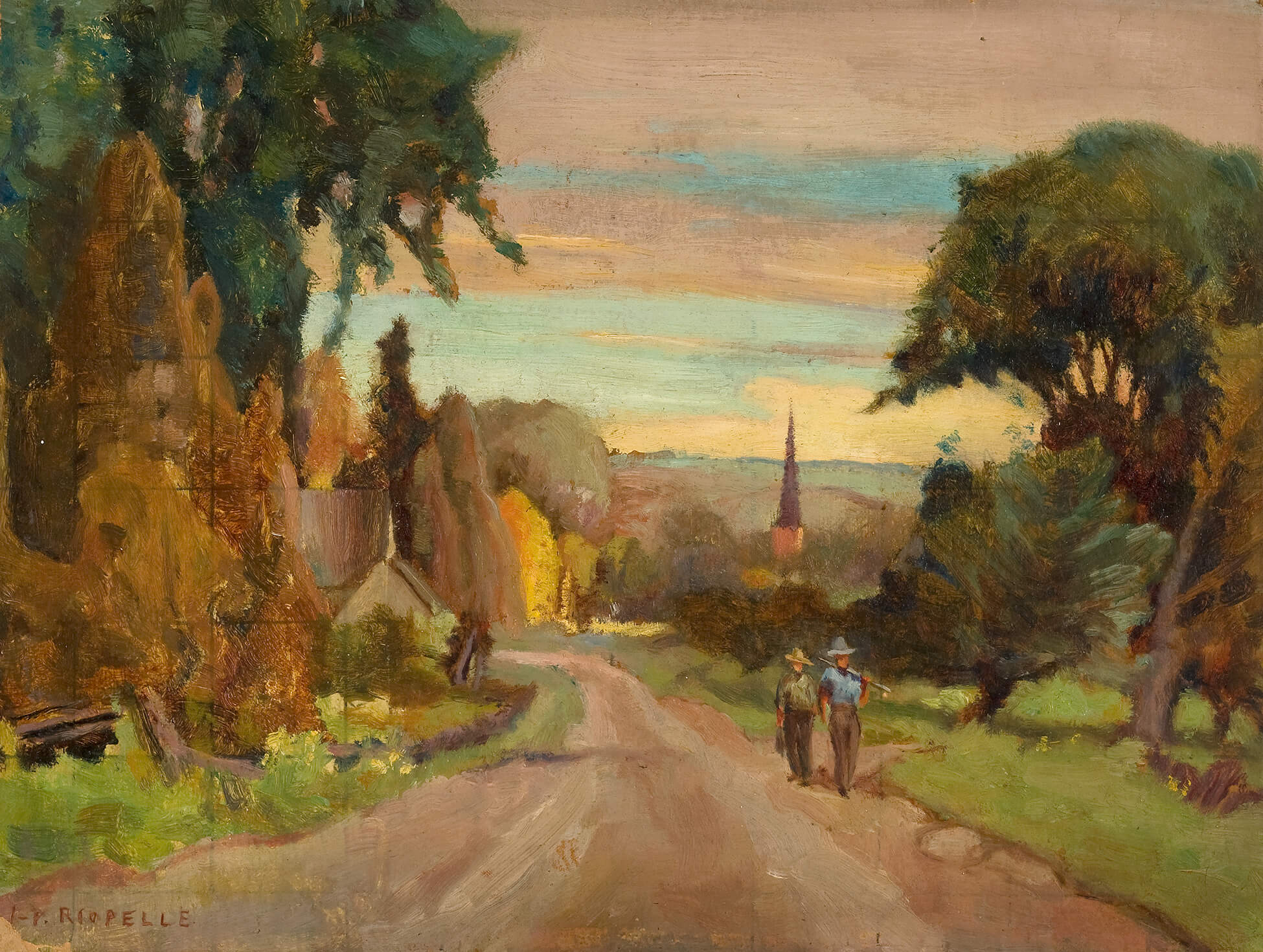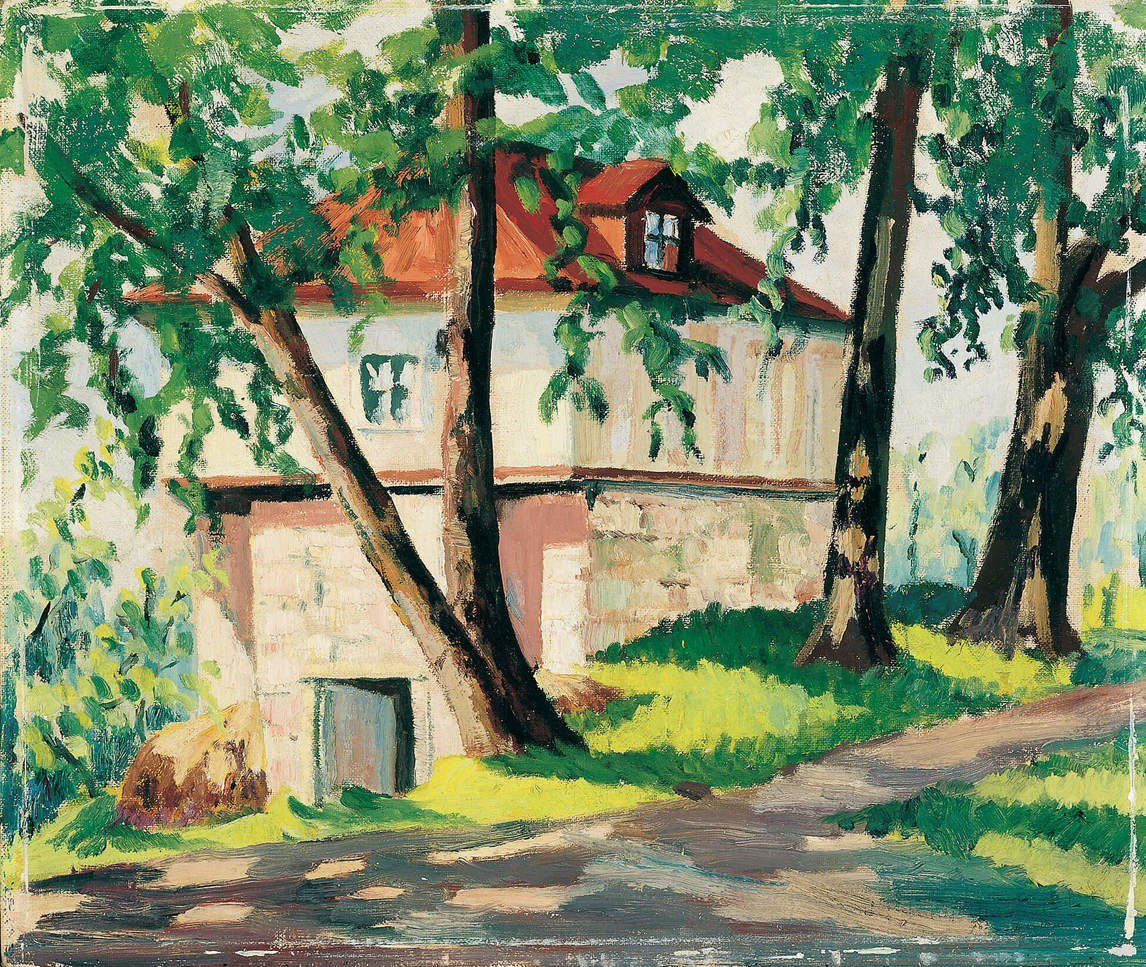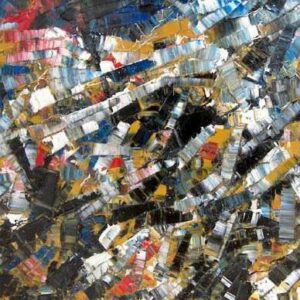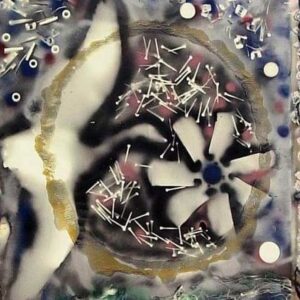Untitled (Pastoral Scene), c.1940

Jean Paul Riopelle, Untitled (Pastoral Scene) (Sans titre [Scène pastorale]), c.1940
Oil on cardboard, 23.3 x 30.6 cm
© Jean Paul Riopelle Estate / SOCAN (2019)
Montreal Museum of Fine Arts
This early work by Jean Paul Riopelle of a Quebec country scene looks nothing like the paintings for which he would become famous and everything like the art of his teacher, Henri Bisson (1900–1973). However, Untitled (Pastoral Scene) (Sans titre [Scène pastorale]) is important because it reveals how Riopelle began making art. Visible in its bottom left is a trace of the first step the artist took in creating the composition: the horizontal and vertical grid that he drew across the painting’s cardboard surface. The technique is one that the young Riopelle, who was a teenaged art student when he created this work, learned from Bisson; it enabled the artist to conserve proper proportions throughout the piece.
Bisson instructed his students to copy widely circulated prints of art, illustrations, and even his own work; it was one of Bisson’s paintings that formed the basis for Riopelle’s Untitled (Pastoral Scene). Recently, the Montreal Museum of Fine Arts acquired a number of small paintings by Riopelle done in the manner of Bisson, such as Untitled (Winter Landscape) (Sans titre [Paysage d’hiver]), c.1941. When asked in 1963 about his early paintings, he said he found them to have little artistic merit and observed: “I did super-academic painting! We copied from catalogues. We quickly passed over the Impressionists. I found it awful!”


About three years after Untitled (Pastoral Scene), Riopelle created Mont-Royal, c.1943, a view of a house in a nearby Montreal borough. According to Bisson’s instruction, a “substitute” for nature—that is, faithful reproduction—was to be the objective, even part of the conception of an artwork. However, as Riopelle told a Toronto journalist in 1964, “when we worked from reproductions, if we ever came across an Impressionist painting in a book, my teacher would whisper, ‘This is poor,’ and we would move on to something else.”
Why did Bisson find the Impressionists so “poor”? Precisely because they did not confine themselves to reproducing nature as it was—they interpreted their motifs in their own way and did not paint strictly what they saw, but how they felt. The work, inevitably subjective, reveals the personality of each artist. One could not have confused a Pierre-Auguste Renoir (1841–1919) with a Paul Cézanne (1839–1906), even when they painted the same place at the same time.
Ultimately, Riopelle abandoned Bisson’s techniques; he did not care to reproduce the realistic academic style of his teacher, as in Untitled (Pastoral Scene). Riopelle would become best known as a painter who sometimes used abstraction and other times figuration, creating an inventive art at once detached from and reflecting the world around him.

 About the Author
About the Author
 More Online Art Books
More Online Art Books
 Acknowledgements
Acknowledgements